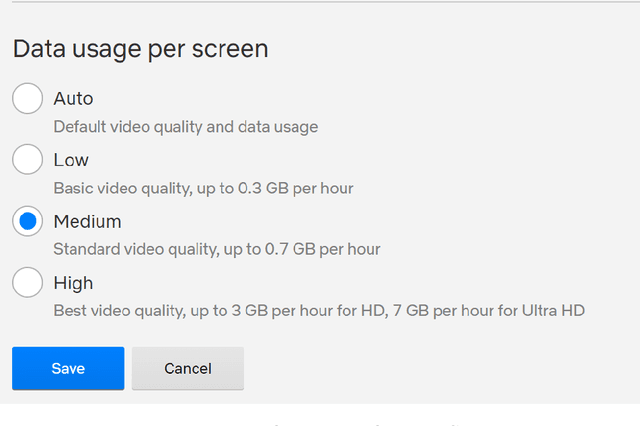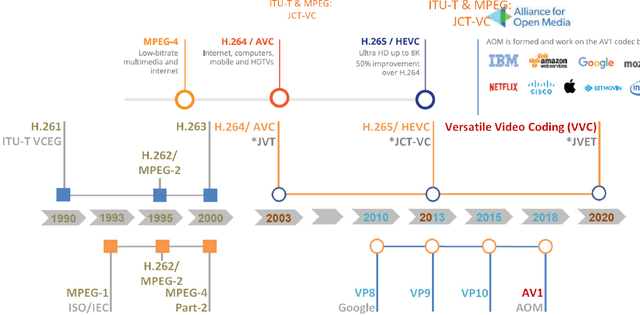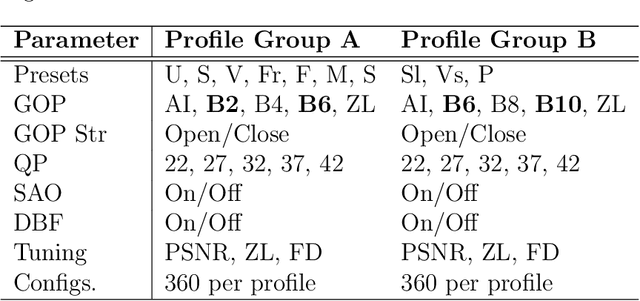Adaptive Encoding for Constrained Video Delivery in HEVC, VP9, AV1 and VVC Compression Standards and Adaptation to Video Content
Paper and Code
Apr 26, 2021



The dissertation proposes the use of a multi-objective optimization framework for designing and selecting among enhanced GOP configurations in video compression standards. The proposed methods achieve fine optimization over a set of general modes that include: (i) maximum video quality, (ii) minimum bitrate, (iii) maximum encoding rate (previously minimum encoding time mode) and (iv) can be shown to improve upon the YouTube/Netflix default encoder mode settings over a set of opposing constraints to guarantee satisfactory performance. The dissertation describes the implementation of a codec-agnostic approach using different video coding standards (x265, VP9, AV1) on a wide range of videos derived from different video datasets. The results demonstrate that the optimal encoding parameters obtained from the Pareto front space can provide significant bandwidth savings without sacrificing video quality. This is achieved by the use of effective regression models that allow for the selection of video encoding settings that are jointly optimal in the encoding time, bitrate, and video quality space. The dissertation applies the proposed methods to x265, VP9, AV1 and using new GOP configurations in x265, delivering over 40% of the optimal encodings in two standard reference videos.
 Add to Chrome
Add to Chrome Add to Firefox
Add to Firefox Add to Edge
Add to Edge